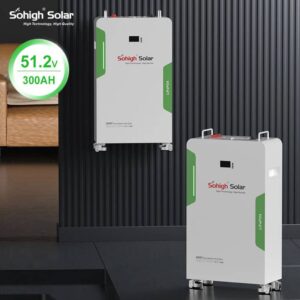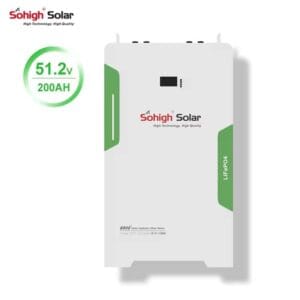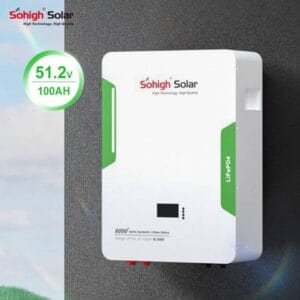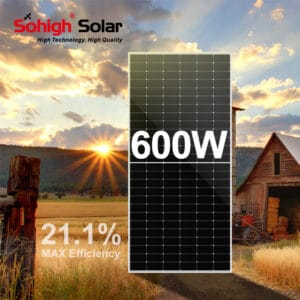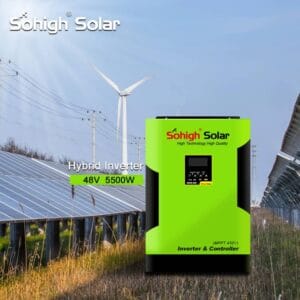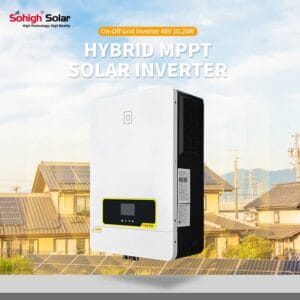Model: Sohigh LiBAT-100AH-240V
Brand: Sohigh Solar
Voltage(V): 240V
Product Origin: Guangzhou,China
Capacity: 100AH
Material: Lithium ion
Advantages of 240V100Ah stacked battery
A 240V 100Ah stacked battery configuration offers specific advantages that are worth considering for certain applications. Here are some of the advantages of using a 240V 100Ah stacked battery:
Efficiency and Power Handling: Similar to the advantages of higher voltage configurations in general, a 240V battery system can offer improved energy efficiency and power handling. Higher voltage systems generally experience less energy loss during charging, discharging, and power conversion processes.
Compact Design: The higher voltage allows you to achieve a given power output with lower current levels. This can lead to a more compact design since smaller conductors can be used for transmitting the same amount of power, reducing space requirements and overall weight.
Power-hungry Applications: If your application requires high power output or rapid bursts of energy, a 240V configuration can better meet those demands compared to lower voltage alternatives. This makes it suitable for applications like electric vehicles (EVs), industrial machinery, and renewable energy systems.
Efficient Voltage Conversion: Many power electronics systems, such as inverters and motor drives, work more efficiently with higher input voltages. A 240V system can align well with the requirements of these components, leading to better overall system performance.
Voltage Regulation: Some applications benefit from more stable voltage regulation. Higher voltage systems can often provide better voltage stability under varying load conditions.
Modular Scalability: Stacking multiple battery units to achieve a 240V system allows for a modular design. This makes it easier to scale your system’s capacity up or down by adding or removing battery units, providing flexibility as your power requirements change.
Compatibility with Three-Phase Power: In industrial settings, three-phase power distribution is common. Higher voltage battery configurations like 240V can more easily integrate with such power systems.
Reduced Heat Generation: Due to the reduced current levels in a higher voltage system, there’s often less heat generated during operation, leading to improved thermal management and potentially longer battery life.
However, it’s crucial to consider the specific needs of your application before choosing a 240V 100Ah stacked battery configuration. Higher voltage systems also come with some challenges, such as increased safety considerations, specialized charging and discharging equipment, and the need for appropriate voltage regulation and protection mechanisms. Always ensure that your chosen battery configuration aligns with your application’s requirements and safety standards.
| Single Battery Module | Nominal Capacity | 100AH | |||
| Energy | 4.8KWh | ||||
| Voltage | 48V | ||||
| Standard Charging and Discharge Current | 20A | ||||
| Size(L×W×H) | 570×380×167mm | ||||
240V100AH | Energy Capacity | 100Ah | |||
| Energy | 24Kwh | ||||
| Voltage | 240V | ||||
| Standard Charging and Discharge Current | 20A | ||||
| Battery Type | Lithium Iron Phosphate (LFP) |
| Operating voltage range | 80-438V |
| lP protection | lP54 |
| Communication method | RS485/CAN |
| Operating temperature | Discharge: -10°C~60°C; Charging: 0°C~60°C |
| Installation method | Natural placement |

